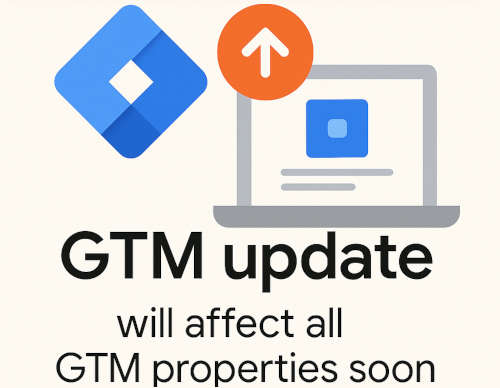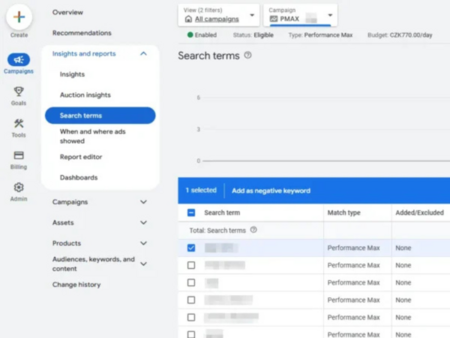There are a handful of Google Ads industry benchmarks out there, but most of them are either overly generalized, or somewhat limited in their coverage of different industries.
So, we put together our own Google Ads benchmarks for 2024. (Specific to Search Ads.)
We analyzed over 3.4 million keywords across 8,101 advertiser domains in 66 business categories, with a total spend of $923 million.

Based on the Semrush PPC ad rates dataset that we used, the average cost per click (CPC) in the United States in 2024 is $4.18.
We benchmarked this against the Google Ads performance data from accounts that we manage, and found that Semrush data tended to average 8 – 17 percent higher than our own. This might have to do with the fact that underoptimized campaigns are bound to be included in large datasets, or the limitations of statistical models that Semrush uses.
This degree of variance is not unusual with ad rates, making these benchmarks a good starting point to plan your next Google Ads campaign (although not in the way most people think — more on this later.)
While there isn’t a direct way to measure click-through rate (CTR) with Semrush data, the data from the accounts we manage suggests an average CTR of 5.6 percent, though it does vary widely across industries.

That said, the variance between industries is high. CPCs can differ by as much as 20X, and we’ve seen CTRs varying from 0.6% to 40%, based on industry and the stage of the customer buying journey that you’re targeting, as you’ll see in the table ahead.
Industry-wise breakdown



Want the data? Find the download and embed options at the bottom of this post.
Let’s delve into the data and uncover what makes each category tick:
High-Value vs. High-Volume: Diverging Strategies
At opposite ends of the spectrum, we see Handyman Services topping the charts with a staggering $19.78 CPC. This reflects the personalized, high-intent, high-competition nature of these services, where potential customers are willing to pay a premium for targeted solutions.
On the other hand, Mass Transit hovers at just $1.43 CPC, making it feasible to prioritize volume and wider reach over individual conversions. Understanding these contrasting approaches is crucial for tailoring your bidding strategy to your industry’s dynamics.
Competitive Battlegrounds: Where CPCs Soar
Several industries face fierce competition, driving up CPCs.
For Legal Services, the average bid sits at $8.58, highlighting the need for laser-sharp targeting and persuasive ad copy to stand out. Similarly, Insurance Providers navigate a crowded space with a $6.02 CPC, demanding strategic use of keywords and audience segmentation to reach the right prospects.
In these competitive arenas, optimizing quality score and ad relevance is paramount to winning clicks without breaking the bank.
Balancing Cost and Reach: Finding the Sweet Spot
For Colleges, Universities, Professional Schools, the $9.13 CPC reflects the targeted nature of attracting students and the potential lifetime value of each acquisition.
In contrast, several industries offer CPCs that seem surprisingly low until you consider their parameters. Air Charter, for instance, boasts an average CPC of just $1.76. Aside from its niche nature, there’s also the fact that 9 out of 10 people searching those keywords are not potential customers.
If you’re selling an SIL-3-grade microcontroller, you can be confident that 90 percent of the searches for your product are by prospects likely to buy it. Owing to people’s fascination with flying and luxury, 90 percent of searches for something like “cost of private jet flight,” are inspired by curiosity, not commercial intent.
Optimizing Ad Spend
In sectors like Clothing and Accessories (CPC $2.92) and Electronics and Appliances (CPC $10.76), the key to efficient ad spend lies in understanding consumer behavior.
In clothing, seasonal trends and fast-changing fashion dynamics require agile ad campaigns. For electronics, detailed product specifications make hyper-specific mapping for products versus keywords or ad-groups.
For instance, someone searching for, “full-frame mirrorless under $2000,” is extremely unlikely to buy a camera that doesn’t fulfil at least two of those parameters, but it’s all too common to see wasteful ads for products that don’t match any of those criteria — something that the searcher typically only realizes after clicking through to the landing page.
How NOT to Use Benchmarks (to Avoid Ruining Your Campaign)
Blindly assuming that the industry average Cost Per Click (CPC) is a good target for your Pay-Per-Click (PPC) campaign can be a bad idea for a couple of reasons.
Firstly, it doesn’t consider variance – the spread between minimum and maximum CPCs. In industries with high variance, the average might not represent an optimal target for many businesses.

As you can see from the chart above, different advertisers can have different average CPCs even within the same industry. This might be because of completely different business or marketing strategies, or even differences in location (bids for “kolaches” are definitely not the same in Texas versus North Carolina, for instance).

So, when the average is influenced by extreme values, aiming for the average might lead you to set unrealistic targets — like trying to get a $0.19 CPC for kolaches in Texas — or inefficient ones, like bidding $2.1 for those keywords in North Carolina.
Other contextual factors may include your unique selling proposition, brand recognition, and target audience. Your optimal CPC might be higher or lower than the average, depending on how these factors influence the effectiveness of your ads.
At this point, you might be wondering: what’s the point of benchmarks, then?
The Right Way to Use Google Ads Benchmarks
Used correctly, PPC benchmarks still serve several important purposes.
Starting Point for Analysis
Benchmarks provide a baseline or starting point. Knowing the industry average CPC gives you a general idea of the landscape you’re operating in. It’s a bit like knowing the average temperature for a place you’re visiting – it helps you pack appropriately, but you’ll still check the actual forecast closer to your trip.
Performance Contextualization
They help contextualize your own performance. If your CPC is significantly higher than the average, it might prompt you to investigate why and optimize your campaigns. Conversely, if it’s much lower, you might be doing something exceptionally well, or you might be missing opportunities to scale up.
Market Understanding
Benchmarks can offer insights into market dynamics. For example, a high average CPC in an industry could indicate high competition or high value per conversion. This can inform broader strategic decisions about entering a market or adjusting your business model.
Goal Setting and Budgeting
While they shouldn’t be the only factor in setting goals, benchmarks can help in budget planning and forecasting. If you know the average CPC and the average conversion rate in your industry, you can estimate how much budget is needed to achieve a certain number of conversions.
Trend Analysis
Looking at how benchmarks change over time can provide valuable insights into trends in your industry. For instance, if the average CPC is steadily increasing, it might indicate rising competition, changing market conditions, or evolving user behaviors.
Competitive Analysis
Benchmarks can give you a sense of what your competitors might be spending and how they’re performing. This can be useful in competitive industries where outperforming the competition is crucial.
Reality Check
They provide a reality check for your expectations. If you’re significantly outperforming the average, that might be a sign of exceptional performance or an indication that you could scale up your efforts for potentially greater returns.
Optimizing Your Google Ads Campaigns
Benchmarks are a starting point to begin planning, but they’re not necessarily appropriate KPIs.
The ultimate goal of a PPC campaign is to maximize return on advertising spend (ROAS), not beat an average CPC.
This means getting the best possible return for your ad spend. Your ideal CPC should be the one that yields the best balance between cost and the value of the conversions it brings, which might be above or below the industry average.
Here’s how to do that.
1. Understand and Track the Right Metrics
Conversion Value vs. Cost: Focus on tracking not just the number of conversions but also the value of these conversions against the cost.
Use Conversion Tracking: Ensure that conversion tracking is properly set up in your Google Ads account to measure the actions that matter most to your business.
2. Optimize for High-Value Keywords
Identify High-Value Keywords: Use analytics to identify which keywords are driving the most valuable conversions, not just the most clicks.
Bid Strategically: Allocate more budget to high-value keywords, even if they have a higher CPC, if they lead to higher-value conversions.
3. Improve Ad Quality and Relevance
Enhance Ad Copy: Write compelling ad copy that directly addresses the user’s intent and needs.
Optimize Landing Pages: Ensure your landing pages are highly relevant to your ad copy and keywords. This improves user experience and Quality Score, potentially lowering your CPC.
4. Utilize Advanced Targeting Options
Leverage Audience Targeting: Use demographic, geographic, psychographic, and behavioral data to target your ads more effectively.
Remarketing: Implement remarketing campaigns to target users who have already interacted with your website but haven’t converted yet.
5. Experiment with Different Bidding Strategies
Manual vs. Automated Bidding: Experiment with both manual and automated bidding strategies to find what works best for your campaign goals.
Use CPA Bidding: Consider using Cost Per Acquisition (CPA) bidding to optimize for conversions rather than clicks.
6. Conduct Regular A/B Testing
Test Ad Variations: Regularly test different versions of your ads (A/B testing) to see which ones perform best in terms of click-through and conversion rates.
7. Implement Smart Budget Allocation
Allocate Budget Based on Performance: Regularly review campaign performance and reallocate your budget to the campaigns, ad groups, or keywords that are providing the best ROI.
Seasonal Adjustments: Adjust your budgets based on seasonality and market trends which can affect both CPC and conversion rates.
8. Leverage Negative Keywords
Regularly update your negative keyword list to avoid spending on irrelevant or low-converting traffic.
9. Monitor Competitor Strategies
Use tools to monitor what competitors are doing in terms of keywords, ad copy, and landing pages. Adapt your strategies to stay competitive or to find untapped opportunities.
Data Table









no replies